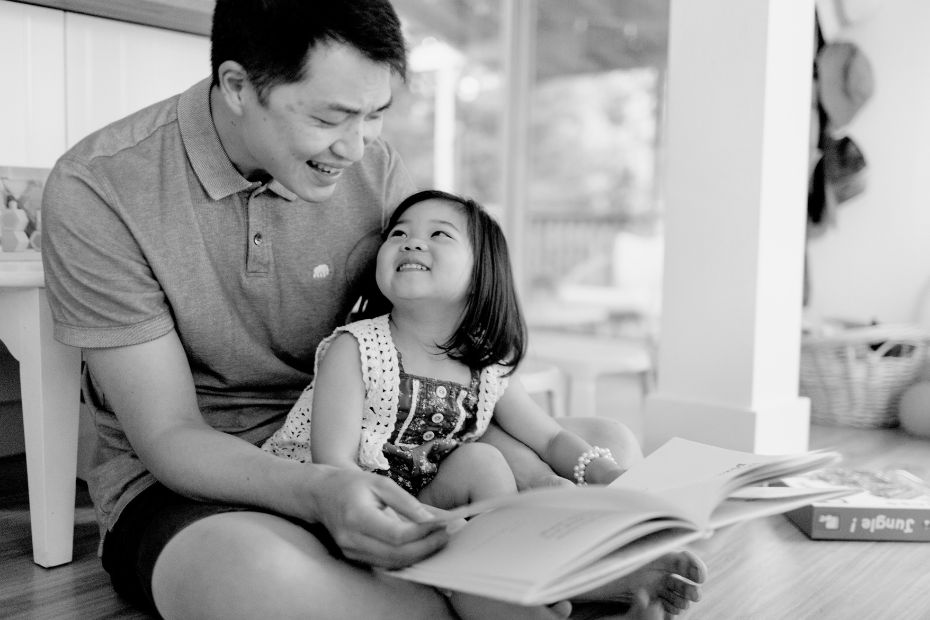
How Often Do Fathers Get 50/50 Custody in Australia? Understanding Shared Parenting Arrangements
The question of how often fathers obtain 50/50 custody arrangements in Australia reflects broader concerns about gender equality in family law and the evolving nature of modern parenting. Many fathers entering the family court system hold misconceptions about their rights to equal time with their children, often believing that 50/50 custody is either automatic or the preferred starting point under Australian law. However, the reality is considerably more nuanced.
Understanding the legal framework and practical realities surrounding shared parenting arrangements is crucial for fathers navigating family law proceedings. While the Family Law Act 1975 (Cth) requires courts to consider equal time arrangements, this consideration does not translate into a presumption or automatic entitlement to 50/50 custody. Instead, Australian family law operates under a child-focused framework where the paramount consideration is always the best interests of the child, not the equal rights of parents.
This comprehensive examination will explore the legal principles governing parenting arrangements, analyze how courts make these determinations in practice, and provide realistic expectations for fathers seeking equal time with their children. By understanding both the possibilities and limitations within the current legal framework, fathers can better prepare for family law proceedings and make informed decisions about their approach to securing meaningful relationships with their children.
The Legal Framework for Parental Custody in Australia
The Family Law Act 1975 (Cth) serves as the cornerstone legislation governing all parenting arrangements in Australia, including those involving equal time sharing between parents. This comprehensive statute has undergone significant amendments since its inception, with the most substantial changes occurring in 2006 when the concept of “custody” was replaced with “parenting orders” and the framework shifted toward encouraging both parents to maintain meaningful relationships with their children.
Under the current legislative framework, the Family Court of Australia and Federal Circuit and Family Court of Australia possess broad discretionary powers to make parenting orders that they consider to be in the child’s best interests. Importantly, the Act does not establish any presumption in favor of equal time arrangements, nor does it prioritize the rights of either parent over the welfare of the child. This child-centric approach represents a fundamental departure from historical approaches that may have favored particular parenting arrangements based on gender or traditional family structures.
The legislation acknowledges that children benefit from having meaningful relationships with both parents, provided this does not expose them to an unacceptable risk of harm. However, this principle operates within the overarching framework of the child’s best interests standard, which means that promoting parental relationships must always be balanced against other factors affecting the child’s welfare, development, and safety.
The Child’s Best Interests Standard
The “best interests of the child” standard forms the bedrock of all family law decision-making in Australia and serves as the primary consideration in determining whether equal time arrangements are appropriate. This standard is not merely a general principle but is specifically defined within the Family Law Act through a comprehensive list of factors that courts must consider when making parenting orders.
The primary considerations under this standard include the benefit to the child of having a meaningful relationship with both parents and protecting the child from physical or psychological harm, including exposure to family violence, abuse, or neglect. These primary considerations must be balanced against each other when they conflict, with child safety taking precedence over maintaining parental relationships where necessary.
Additional factors that courts must consider include the child’s views (taking into account their age and maturity), the nature of the relationship between the child and each parent, the willingness and ability of each parent to facilitate the child’s relationship with the other parent, and the capacity of each parent to provide for the child’s physical, emotional, and developmental needs. Courts also examine any family violence history, the practical difficulty and expense of maintaining contact between the child and each parent, and any other factor the court considers relevant to the particular circumstances.
The application of these factors means that equal time arrangements are only appropriate where they genuinely serve the child’s best interests, rather than merely satisfying parental desires for equal treatment. This child-focused approach ensures that parenting arrangements are tailored to the specific needs and circumstances of each family, rather than following a one-size-fits-all formula.
Equal Time Considerations Under Section 61DA
Section 61DA of the Family Law Act creates a mandatory consideration for courts when making parenting orders, requiring them to consider whether it is in the child’s best interests for parents to have equal time with the child. This provision was introduced as part of the 2006 amendments and represents Parliament’s recognition that equal time arrangements can benefit children in appropriate circumstances.
However, this legislative requirement to “consider” equal time falls far short of creating a presumption or automatic entitlement to 50/50 arrangements. The court must actively consider whether equal time would be in the child’s best interests, but if this consideration leads to a negative conclusion, the court is under no obligation to order equal time. The consideration requirement simply ensures that equal time is not overlooked as a potential option, rather than mandating its implementation.
Furthermore, even where a court determines that equal time would be in the child’s best interests, Section 61DA requires that such an arrangement must also be “reasonably practicable.” This additional requirement recognizes that ideal arrangements on paper may not work in practice due to geographic, logistical, or other practical constraints. Factors affecting practicability include the distance between the parents’ homes, their work schedules, the child’s school and extracurricular commitments, and the parents’ ability to communicate and cooperate effectively.
The “reasonably practicable” element serves as a significant limiting factor for equal time arrangements, as many separated families face practical challenges that make true 50/50 arrangements difficult to implement successfully. Courts will not order arrangements that are likely to cause confusion, stress, or disruption to children’s lives, even where equal time might otherwise be beneficial.
How Courts Determine Parenting Arrangements
Courts exercise broad discretionary powers under Section 65DAA of the Family Law Act when determining appropriate parenting arrangements, with this discretion guided by the overarching principle of the child’s best interests. The exercise of this discretion involves a careful balancing of multiple factors specific to each family’s circumstances, rather than the application of rigid formulas or presumptions.
The court’s approach to determining parenting arrangements begins with a thorough assessment of the evidence presented regarding the child’s needs, the capacity of each parent to meet those needs, and the practical considerations that would affect any proposed arrangement. Judges consider expert evidence from family report writers, psychologists, and other professionals where appropriate, alongside testimony from the parents and, in some cases, the child’s own views.
The “proper” standard that guides judicial decision-making is fundamentally based on what will best serve the child’s welfare and development. This standard requires courts to look beyond the immediate desires of parents and consider the long-term implications of different parenting arrangements for the child’s emotional, physical, and psychological wellbeing. The court’s assessment must be evidence-based and consider both the current circumstances and likely future developments.
The Goode v Goode Precedent
The landmark case of Goode v Goode [2006] FamCA 1346 provides crucial guidance on how courts approach equal time arrangements and has become a foundational precedent in Australian family law. This Full Court decision established important principles that continue to influence judicial decision-making regarding 50/50 custody arrangements.
In Goode v Goode, the Full Court emphasised that equal time arrangements should only be ordered in a minority of cases, reflecting the reality that such arrangements require specific circumstances to be successful. The court noted that while the 2006 amendments to the Family Law Act encouraged consideration of equal time, they did not create a presumption in favor of such arrangements or suggest that they would be appropriate in most cases.
The case established the principle that where existing parenting arrangements are working effectively for a child, compelling reasons are required to justify altering those arrangements, even if an equal time arrangement might theoretically be in the child’s best interests. This principle recognizes the importance of stability in children’s lives and the potential disruption that can result from unnecessary changes to established routines and relationships.
The Goode v Goode precedent also emphasized the importance of practical considerations in determining whether equal time arrangements are appropriate. The court noted that successful equal time arrangements typically require parents who can communicate effectively, live in reasonable proximity to each other, and demonstrate flexibility in their approach to parenting. Where these conditions are not met, equal time arrangements are less likely to serve the child’s best interests.
Practical Considerations for 50/50 Shared Custody
The practical reality of implementing 50/50 custody arrangements presents numerous challenges that extend far beyond the legal principles outlined in the Family Law Act. While courts are required to consider equal time, the successful implementation of such arrangements depends on a complex interplay of factors including parental cooperation, geographic proximity, financial resources, and the specific needs of the children involved.
Research and judicial experience indicate that equal time arrangements work best when parents can maintain a cooperative relationship focused on their children’s welfare rather than their own grievances. This requires a level of communication and flexibility that many recently separated couples find challenging to achieve. Courts are acutely aware that dysfunctional communication between parents can quickly turn a 50/50 arrangement into a source of ongoing stress and conflict for children.
Geographic considerations play a crucial role in the practicability of equal time arrangements. When parents live significant distances apart, the logistics of moving children between homes every few days can become burdensome and disruptive to children’s routines, school attendance, and social relationships. Courts generally prefer arrangements that minimize disruption to children’s lives while maximizing their time with both parents.
Financial factors also influence the viability of equal time arrangements. Maintaining two homes equipped to accommodate children’s needs can be expensive, and not all families have the resources to implement such arrangements effectively. Courts consider whether proposed arrangements are financially sustainable and whether financial stress might ultimately undermine the arrangement’s success.
Scenarios Where 50/50 May Be Appropriate
Equal time arrangements are most likely to be ordered when specific favorable conditions exist that support their successful implementation. These typically include situations where parents live in close proximity to each other, demonstrate a capacity for effective co-parenting communication, and show flexibility in managing the practical aspects of shared care.
Successful 50/50 arrangements often involve parents who have similar parenting philosophies and can maintain consistency in rules, routines, and expectations across both homes. This consistency helps children adapt to the shared arrangement without confusion or stress about differing expectations in each household. Courts look favorably on evidence that parents can put aside their personal differences to focus on their children’s needs.
The age and temperament of children also influence the appropriateness of equal time arrangements. While there is no strict age limit, courts generally find that older children who can better adapt to changing environments and maintain their own schedules may be more suited to 50/50 arrangements. However, this is not a hard rule, and some younger children thrive in well-managed shared care arrangements.
For example, a successful 50/50 arrangement might involve divorced parents who live within a few kilometers of each other in the same school district, maintain regular communication about their children’s needs, and demonstrate flexibility when unexpected situations arise. Both parents might attend school events together, coordinate homework and activities, and present a united front on important parenting decisions while maintaining separate households.
When 50/50 Is Less Likely to Be Ordered
Courts are reluctant to order equal time arrangements in circumstances that could potentially harm children or prove unworkable in practice. These situations include cases involving family violence, substance abuse, mental health issues that impair parenting capacity, or significant geographical separation between parents.
Where there is evidence of family violence or abuse, courts prioritize child safety over maintaining equal parental contact. Even where violence has not been directed at children specifically, exposure to conflict and aggression between parents can cause significant psychological harm. In such cases, supervised contact or sole custody arrangements may be more appropriate than equal time sharing.
Substance abuse or addiction issues also weigh heavily against equal time arrangements, as courts cannot ensure children’s safety and wellbeing in environments where substance abuse occurs. Similarly, untreated mental health conditions that impair a parent’s judgment or ability to provide consistent care may preclude equal time arrangements until appropriate treatment is undertaken and sustained.
Special needs children may require more stable, consistent environments that are difficult to maintain across two households. Courts consider whether children with disabilities, behavioral issues, or developmental delays would benefit from the additional structure and consistency of a primary residence arrangement rather than the transitions required in equal time sharing.
Parental alienation or intentional interference with the child’s relationship with the other parent can also preclude equal time arrangements. Courts require evidence that both parents will actively support the child’s relationship with the other parent, and where one parent demonstrates unwillingness to facilitate this relationship, equal time becomes impractical and potentially harmful to the child.
Frequently Asked Questions About 50/50 Custody for Fathers
Is there a legal bias against fathers in custody decisions?
Australian family law explicitly operates without gender bias, and courts are prohibited from favoring either parent based on gender. The Family Law Act requires decisions to be made solely based on the child’s best interests, not parental gender. However, historical patterns and societal factors can influence outcomes, and fathers may need to work harder to overcome assumptions about traditional caregiving roles.
Is 50/50 custody the default arrangement under Australian law?
No, 50/50 custody is not the default arrangement. While courts must consider equal time, there is no presumption or automatic entitlement to equal time arrangements. Each case is decided on its individual merits based on what serves the child’s best interests in those specific circumstances.
What can fathers do to improve their chances of obtaining equal time?
Fathers can improve their prospects by demonstrating consistent involvement in their children’s lives, maintaining stable housing and employment, showing willingness to facilitate the child’s relationship with the mother, and avoiding conflict or litigation wherever possible. Attending parenting courses and engaging in family dispute resolution can also demonstrate commitment to effective co-parenting.
How important is legal representation for fathers seeking equal time?
Legal representation is highly recommended for fathers seeking equal time arrangements, as family law proceedings are complex and the stakes are high. Experienced family lawyers can help fathers understand their rights, prepare compelling evidence, navigate court procedures, and negotiate favorable outcomes through alternative dispute resolution methods.
Are there alternatives to court proceedings for establishing equal time arrangements?
Yes, mediation and collaborative law processes can be effective alternatives to court proceedings. These methods are often less adversarial, more cost-effective, and allow parents to maintain greater control over the outcome. Many equal time arrangements are successfully negotiated through these alternative dispute resolution methods.
Next Steps for Fathers Seeking 50/50 Parenting Arrangements
Fathers considering pursuit of equal time arrangements should begin by obtaining comprehensive legal advice from experienced family law practitioners who can assess their specific circumstances and provide realistic expectations about likely outcomes. This initial consultation should explore both the strengths and weaknesses of their case and identify steps that could improve their prospects of success.
Engaging in family dispute resolution services is often a mandatory step before court proceedings and can provide an opportunity to negotiate arrangements that work for all family members. Many families find that mediation or collaborative law processes produce better outcomes than adversarial court proceedings, particularly for ongoing co-parenting relationships.
Fathers should also consider participating in parenting courses or co-parenting programs that can help develop the skills necessary for successful shared care arrangements. These programs not only provide valuable practical skills but also demonstrate to courts a commitment to effective parenting and child-focused decision-making.
Documentation of involvement in children’s lives becomes crucial evidence in family law proceedings. Fathers should maintain records of their participation in school activities, medical appointments, extracurricular activities, and day-to-day care responsibilities. This evidence helps establish their capacity and commitment to active parenting.
Where possible, fathers should prioritise their children’s stability and wellbeing over their own desires for particular arrangements. Courts respond favorably to parents who demonstrate flexibility and willingness to modify their positions based on children’s changing needs and circumstances.
Conclusion
The reality of how often fathers obtain 50/50 custody in Australia reflects the complex interplay between legal principles, practical considerations, and individual family circumstances. While the Family Law Act requires courts to consider equal time arrangements, this consideration does not translate into automatic entitlement or presumption in favour of 50/50 custody.
Successful equal time arrangements require specific favourable conditions including parental cooperation, geographic proximity, financial stability, and children who can adapt well to shared care arrangements. Courts order these arrangements only where they genuinely serve the child’s best interests, which occurs in a minority of cases according to established precedent.
Fathers seeking equal time with their children should focus on demonstrating their capacity for effective co-parenting, maintaining stability in their children’s lives, and prioritising their children’s welfare over their own preferences. With proper legal guidance, realistic expectations, and a child-focused approach, fathers can work toward arrangements that maximise their meaningful involvement in their children’s lives while serving their children’s best interests.
The key to success lies not in pursuing equal time as an entitlement, but in building a compelling case that demonstrates how such an arrangement would benefit the children involved. This approach aligns with the fundamental principles of Australian family law and provides the best opportunity for achieving favourable outcomes for both fathers and their children.
If you need help with any of this, of course, talk to one of our family lawyers or mediators at Mediations Australia.








